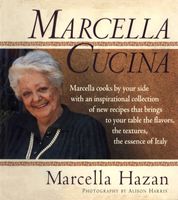Advertisement
Frittatas
Appears in
Published 1997
It’s curious about the idioms we use: We rarely think to question their appropriateness. Inexplicably eggs seem always to be associated with failure. Someone has a flop and you say he has laid an egg. Why should that be when nothing is so perfect as an egg? Italian has a similar expression—if you bungle whatever you are engaged in doing, you hang your head and say, “I’ve made a frittata.” Yet, a frittata is one of the most popular things you can make in the kitchen, a sure fire hit.
It has been 25 years since I began teaching people how to make frittatas, and in the interim the word has entered English-language dictionaries. In looking back I find that among all the different frittatas in my previous books—with cheese, with all manner of vegetables, with spaghetti, even one that you cut into noodles and sauce and toss like pasta—two basic ones are missing. They are the classic summer one with basil and potatoes, and the Italian version of bacon and eggs, frittata con la pancetta. The time has come to remedy that oversight and, while I have the opportunity, I’m adding two new ones I’ve been making. There is a frittata with potatoes and rosemary that incorporates potatoes thin as chips cooked with onion, and a winter frittata I am particularly fond of, with Savoy cabbage.

